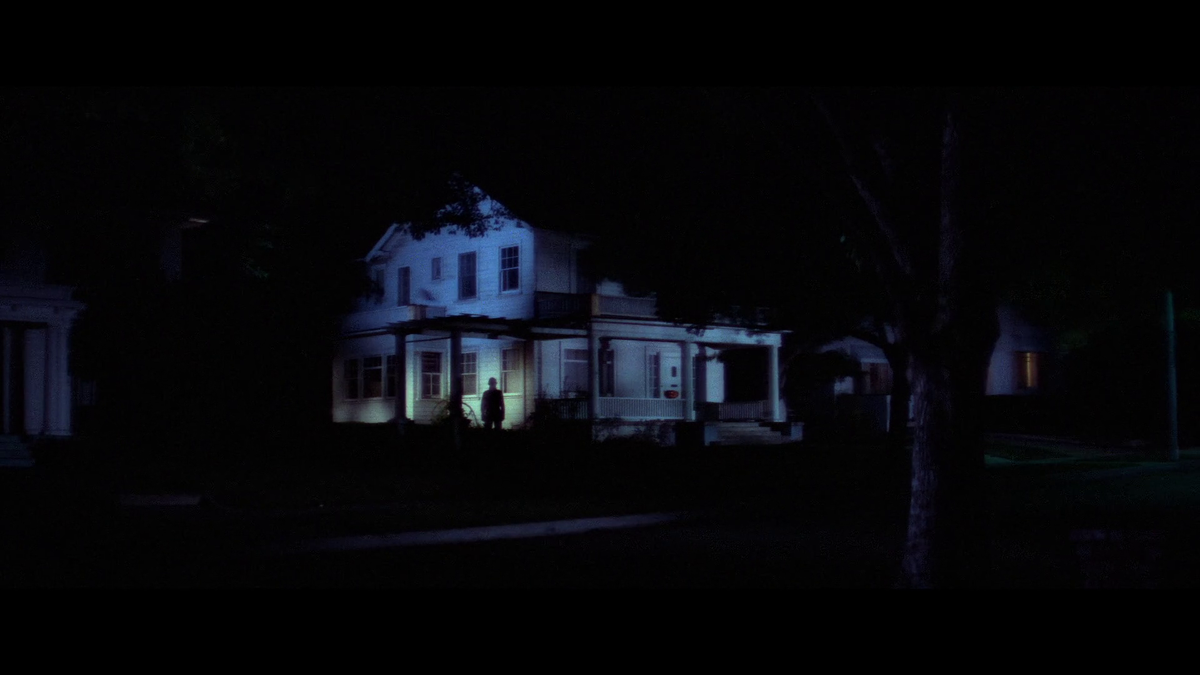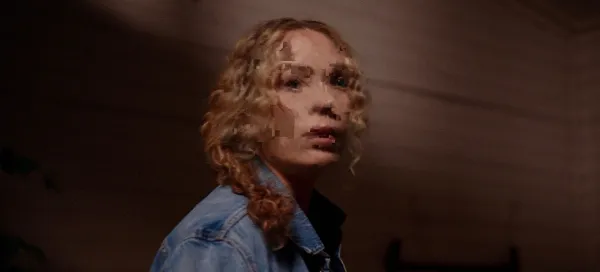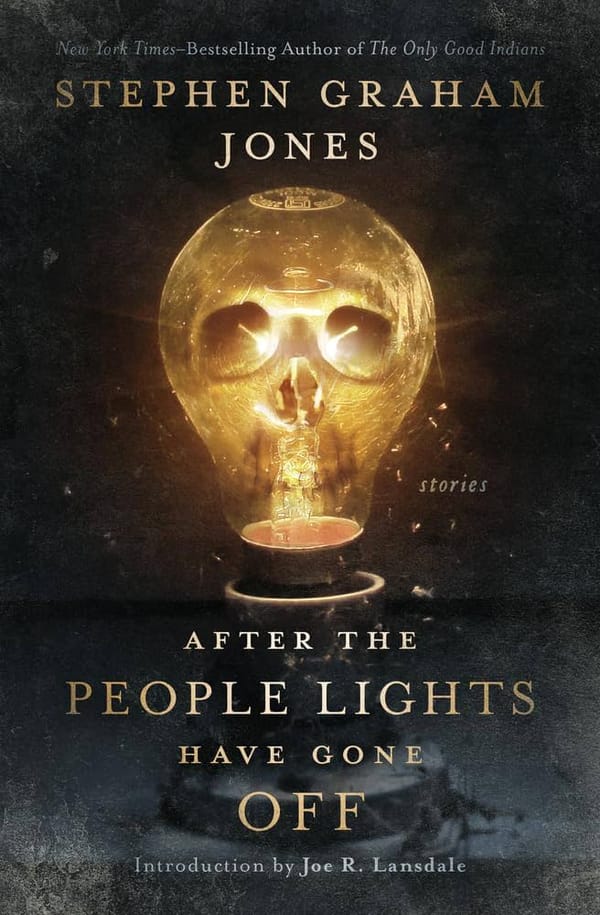Tracing The Shape 31: You Can't Kill The Boogeyman

Halloween, like Black Christmas and The Texas Chain Saw Massacre, doesn't really end, not in the neat way we tend to think about. There's no real solution to anything, just two people who managed to survive and a whole town terrorized all over again. If you leave it there, if you never make a sequel, it's the origin of a haunting, real or imagined. It leaves you in a cloud of viscous, sinister gloom.
Carpenter ends the film on shots of Haddonfield at rest, silent hallways and empty stairwells, set to the metronomic, husky breathing of The Shape. Sonically it's meant to create the feeling that Michael Myers is inescapable. Thematically, it might mean that he's something not just inescapable, but essential. He's breathing life into a dead world. He's like oxygen.
It's all designed to evoke the feeling best summed up by the cemetery groundskeeper earlier in the film: "Every town has something like this happen." For all the thematic grandeur and mythmaking of its script, Halloween is still a story about someone stalking and murdering three teenagers, something that feels not only plausible but, in the 21st century, quite possible. Every town does have something like this, the film tells us, over and over again, because Haddonfield could be anywhere.
The something in my town was named Kenneth Allen McDuff.
He was born in my hometown in Texas, went to prison for a triple murder in the 1960s, had his sentence commuted to life with parole, and made it out of prison by the late '90s. By 1992, when I was five years old, he was a wanted man who'd killed again, spotted all over Central Texas, including my hometown. It's the first time I remember seeing my hometown on the news, and the first time I ever knew a killer by name.
I'm sure my memory of this is outsized because I was so young at the time, but for a few weeks that spring it felt like my entire world was slippery, smeared over with grease, hard to hold steady. McDuff's name was on the lips of every adult I knew, and we couldn't even ride our bikes out of sight for fear that he'd pick us up. He was arrested again, sentenced to death, and executed in 1993, and I never so much as sniffed him, but something like that bursts a certain bubble somewhere up in the stratosphere of your mind, pokes a hole in your brain's ozone layer through which something radioactive can get through.
It's the slow drip of ambient human malice into an otherwise unpoisoned brain.
Michael Myers killed three people in front of us on Halloween night, 1978, and he did it with considerable cinematic craft and poise. But what Halloween does best is not how Michael kills, but how his presence smears all that radioactive malice across a town. Before he's even returned home, a reminder of him is right there on a quiet street, the Myers house blighting the block with its slow rot. When he finds his way back, he drives people to paranoia, makes everyone jumpy, his very presence fraying at social bonds to the point that a neighbor won't even open their door to a girl screaming for help.
I was never in danger with my town's Boogeyman. He didn't know I existed, and he probably wouldn't have cared. What I knew, as someone born just down the road from where he was about 40 years after he was, was the way his world intruded on mine in small ways. A fascinated look in my father's eyes as he watched the news, a worried look in my grandmother's. A darkness up the gravel road where we rode our bikes that didn't mean there was someone there but definitely meant that someone could be there. He was an odor, a miasmic cloud, a trace gas seeping up from somewhere, slowly working on our minds. I swear I can still taste the air outside from those nights when I couldn't ride my bike.
That's what Halloween does, more than anything else and better than anyone else that's tried to follow in its wake. It is a film designed in every respect, from music to Steadicam shots to those famous bagged leaves that keep blowing through the frame, to remind you that every town has something like this happen, and your town could be next.
Tommy Doyle was right when he said "You Can't Kill the Boogeyman," but he also oversimplified what the Boogeyman is. The Boogeyman can take a Shape, but he's also invisible, breathable like air. He lives in your head in a way that's somehow not quite real yet feels beyond figurative. Hundreds, thousands of people in Haddonfield slept soundly that night, unaware of what unfolded in two houses on one street, but they still felt it. They woke up the next morning and they could taste something different in the air, something that would make them check their locks a little closer when they went to bed that night. That's what The Boogeyman is.
And so, here at the end, with this understanding in our minds, we return to what is, for me, still the ultimate question:
What Does Michael Myers Want?
It's a question that can really only glance beyond the hypothetical, especially if we're viewing it, as we have always been, through the lens of a single film. The answer, the real one, is deliberately hidden from us both by authorial intent and the character's own nature. We are simply not meant to know.
He wants to kill people, certainly, and he wants to avoid being caught while killing people. But is that really all? Is his mind that blank? Everything we've talked about over the last month, from the way he wields Annie's tombstone to the way he dresses like a ghost for one precious scene, would suggest that it's not. So, what does Michael really want? I suppose I owe you some kind of answer, right?
I think whatever kernel of truth we can pick up and carry away from this film about Michael lies in the last thing he does: He vanishes. He does not simply run away – sometimes it's fun to imagine he doesn't move at all – he just vanishes, and we know that, metaphorically at least, because Loomis makes no move to chase him into the distance. He's just...gone.
Why? Because Michael Myers is free. He was free when he broke out of Smith's Grove, but now this night, these killings, this brush with his own death has rendered him truly free. I don't mean that he had an epiphany, or that his life was changed. I mean free in the more sociopathic sense of the word. Whatever limitations he might have had, or might have simply assumed he had, are gone now. He is beyond any limit you can impose.
What does Michael Myers want? He wants to be free. Free to roam, free to hunt, free to kill.
Free to take any Shape he likes.
Thank you so much to everyone who took the time to read these essays, whether you just stopped in for one or two or you've been here all month long. Tracing The Shape is the kind of project I've always wanted to do as a critic and horror journalist, but I'd never had the platform. In 2025 I decided to make the platform, and here we are. It's been more fun than I could have ever imagined.
If you'd like more writing like this, please consider supporting this newsletter with a free sign-up or a paid subscription. I'm already thinking about what next October might bring.
Happy Halloween,
Matthew



